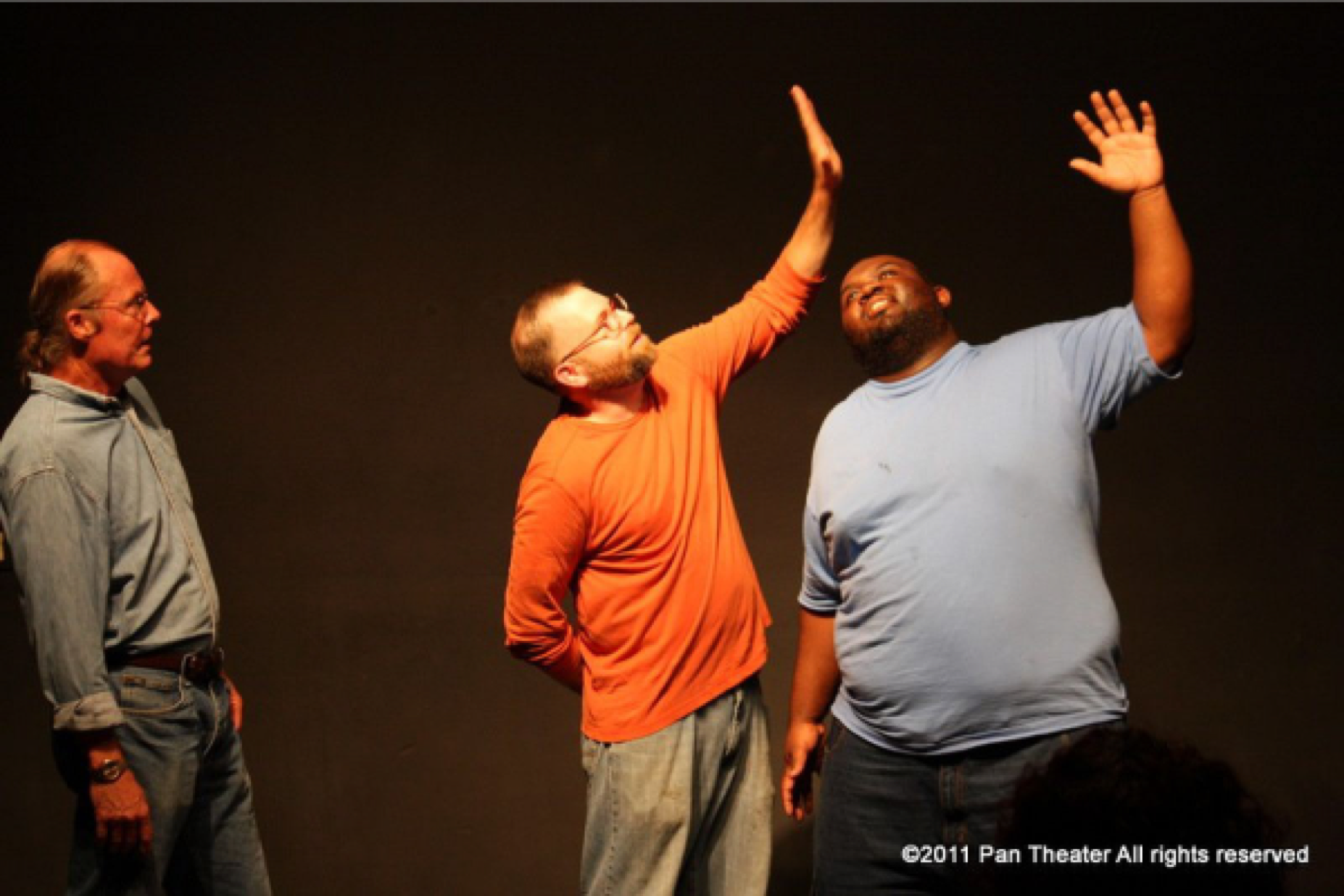
(Liquid Mind Performers: Daniel, John and Elgin - Pan Theater 2011)
Accepting and Acceptance a Guide for the Improv Actor
At our second Pan Theater Short Form Improv class Wednesday night, we got down to the rules of improv a little more. The most important rule is “Yes, And …” This means, to put it a little differently, “accept” and “offer.”
First, you should always accept whatever suggestion your scene partner gives you. Don’t block it or contradict what he says. If he says “Good morning, Miss Doodlehead, I love that orange jumpsuit you’re wearing,” then you’re Miss Doodlehead and you are wearing an orange jumpsuit. And it’s morning.
So you’ve already got a lot of information to begin building the scene.
Now, if you’ve ever tried this, you know it’s harder that it sounds. My first instinct is usually to counter, for some reason. “Are you color blind? I would never wear orange. This is fuchsia. And I told you never to call me that.” But then I have blocked all the information my partner offered.
Accepting it often feels awkward because you are never prepared, but that is the nature of improv.
So I want to accept whatever he offers, and then offer some additional information. “Oh, Mr. Doinkins, thank you. And you look fabulous in that paisley vest and matching socks. You must be going to the church picnic too!”
So now we have even more information – we know who we are, what we’re wearing and where we’re going. And it just keeps building from there – and yes, it can get pretty crazy.
I always feel that I need MORE PRACTICE saying “yes, and…” We spend a lot of our lives making them what we want them to be, trying to feel like we’re in control as much as we can. In improv, it’s the exact opposite – we are completely sharing the scene, and the moment, with our partner(s), and inasmuch as we try to control the scene, our character’s relationships, or even our own character, we are taking strength away from the scene and away from our partners.
When you walk into the theatre, be prepared to let go and leave your comfort zone at the door. That’s what makes improv so much fun, and also a little … scary? =)
After class, we went our separate ways – some to the BART station half a block away, some pedaling off on bicycles, and some, like me, hopping into my car to return home (to Hayward) on 580, via Grand Avenue.
Whichever way you choose to come and go, it couldn’t be a more convenient location.
All the way home, I always think about the class – what really went well, what I could have done better, and of course the funniest moments that will stick with me forever.
Delan McLoren
Short Form Training Troupe Student
Fall 2011